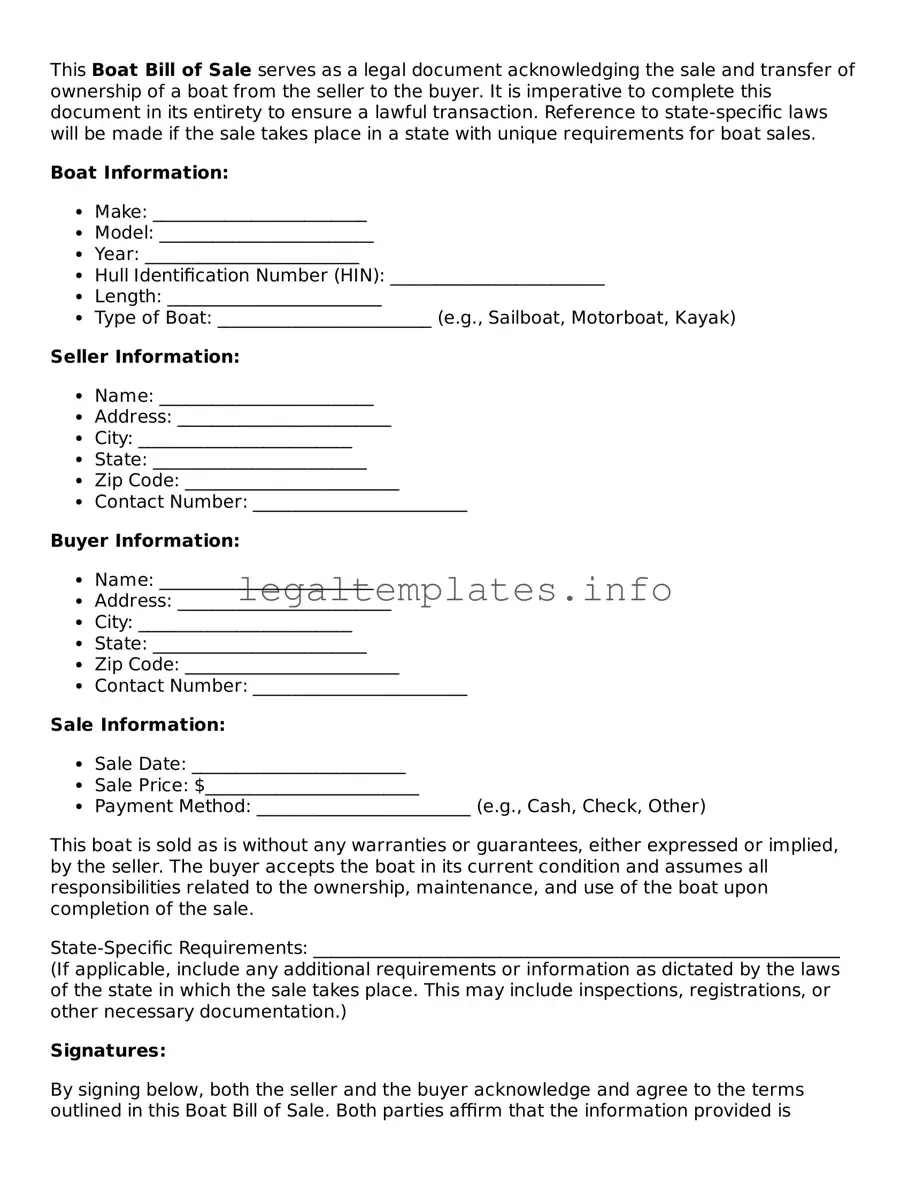The Boat Bill of Sale form shares similarities with the Vehicle Bill of Sale form. Both serve as critical documents in transferring ownership from one party to another. Each form records the sale of a physical asset, detailing the transaction between buyer and seller, including price, description, and condition of the item. They both protect the rights of both parties and serve as a receipt for the transaction.
Similar to the Boat Bill of Sale, a General Bill of Sale is used for transactions involving personal property. However, the General Bill of Sale is broader, covering sales of any type of personal property from electronics to furniture, not limited to vehicles or boats. It includes essential details such as the parties' information, sales price, and a description of the items sold, providing legal proof of the transaction.
The Real Estate Bill of Sale is another document similar to the Boat Bill of Sale, adapted for real estate transactions. While both documents memorialize a transfer of ownership, the Real Estate Bill of Sale is specific to property sales, detailing the land or buildings being transferred, unlike the Boat Bill of Sale, which deals with maritime vehicles. The real estate counterpart also often requires additional legal formalities, such as notarization, to be considered valid.
Equine Bill of Sale is akin to the Boat Bill of Sale but specific to horse transactions. It documents the sale of a horse, capturing critical details like breed, age, and health information, similar to how the Boat Bill details the make, model, and condition of the boat. Both bills serve as a definitive record of the sale, ensuring transparency and accountability from both buyer and seller.
The Aircraft Bill of Sale is another similar document, focusing on the sale of airplanes. Like the Boat Bill of Sale, it records the transaction details, including identification numbers and descriptions of the aircraft. Both documents are indispensable in their respective fields for registering the ownership transfer with relevant authorities, such as the FAA for aircraft and the appropriate maritime agency for boats.
A Firearm Bill of Sale is comparable to the Boat Bill of Sale, with its specific focus on the transfer of ownership of a gun. It lists details like the make, model, and serial number of the firearm, paralleling the boat document's detailing of the vessel. Both forms are crucial for proving ownership and ensuring the transfer complies with state and federal laws.
A Business Bill of Sale is related but deals with the transfer of ownership of a business rather than a physical item like a boat. It encompasses details of the transaction, including the sale price and a description of the assets being transferred. This document ensures that both parties are clear about the terms of the sale and that there is a record of the transfer of proprietary rights, much like the Boat Bill of Sale.
A Promissory Note is somewhat similar to a Boat Bill of Sale as it documents a transaction, specifically a promise to pay a sum of money under agreed terms. While it does not transfer ownership of tangible property, it is an important financial document that outlines the borrower's obligation to the lender, akin to how the Boat Bill of Sale outlines terms of the boat’s sale.
An Artwork Bill of Sale parallels the Boat Bill of Sale in the art world, detailing the sale of art pieces between a buyer and seller. It specifies the artwork, artist, provenance, and authenticity, ensuring the buyer receives all necessary information, similar to the detailed description of a boat in its respective bill. This document is vital for art collectors and investors to prove ownership.
Last but not least, a Pet Bill of Sale is similar to the Boat Bill of Sale, focused on the sale of animals. Like boats, pets are considered personal property, and this document details the transaction of selling a pet, including breed, age, vaccinations, and health status. Both documents aim at providing a clear record of sale and transferring ownership from the seller to the buyer.
